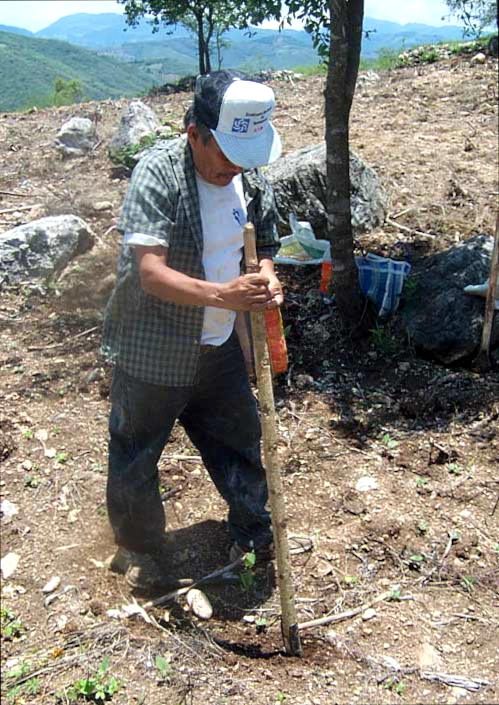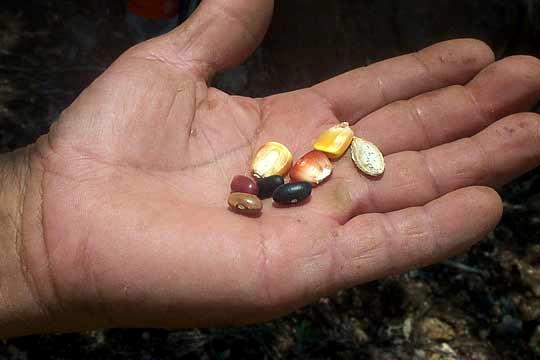Excerpts from Jim Conrad's
Naturalist Newsletter
from the July 6, 2007 Newsletter issued from Sierra Gorda Biosphere Reserve, QUERÉTARO, MÉXICO
PLANTING CORN
Last Tuesday afternoon I took a walk along the reservoir, partly to catch a cool breeze but also just to admire the towering thunderheads mushrooming up above the mountains all around. When I got to the Reserve's entrance gate I saw that our neighbor was planting corn, what many call maze. Some of you may recall a picture I took of this very cornfield last October showing how marigolds grew beside very tall cornstalks. That picture still resides at www.backyardnature.net/n/06/061023m.jpg.
The two men sowing the seeds Tuesday were hot and tired, and seemed curious about me, so I struck up a conversation, hoping to learn about their corn- planting techniques.
The cornfield had been cleared a couple of months ago, then three or four weeks ago they'd laboriously turned up the soil. I know it was laborious work because the soil here is so stony that all soil-turning has to be done by hand. Last Tuesday each man had a pole with a chisel-like attachment at its end, poking holes into the soil, where the seeds were dropped. You can see the older man making a hole below:

That good man was kind enough to show me the seeds he was planting. He held out his heavily calloused hand and in his palm there lay three grains of variously colored corn, four beans of three colors, and a squash seed. A kind of electric shock flashed through my system, a shock of recognition that I was in the presence of something transcendent, a kind of distillation of knowledge and experience surviving from the dim past. I asked the old man for a picture of that hand and by pure luck I got what may be the prettiest hand-picture I've ever seen. It's below:

I realize that the men were using traditional methods only because they didn't have money for pesticides and fertilizers. Probably with them it's the same way it was with my own family when I was a kid on the Kentucky farm. We couldn't afford a tobacco-setting machine so we planted all our tobacco plants in holes made by wooden hand-pegs whittled from catalpa-tree branches, and we didn't like it when people told us how interesting our pegs were. I suspect that the men Tuesday were even ashamed to be seen planting their corn traditionally instead of having a tractor with a plough come in.
When I walked by the field later I saw something else worth reporting: The men had crumbled marigold blossoms all along the field's edge. The marigolds that last October I'd thought might be native plants gone weedy -- marigolds are native Mexican plants -- had been sown there. Of course marigolds are known for their ability to repel insect pests. Northerners would do well to plant marigold fences around their gardens just as shown in last October's picture.